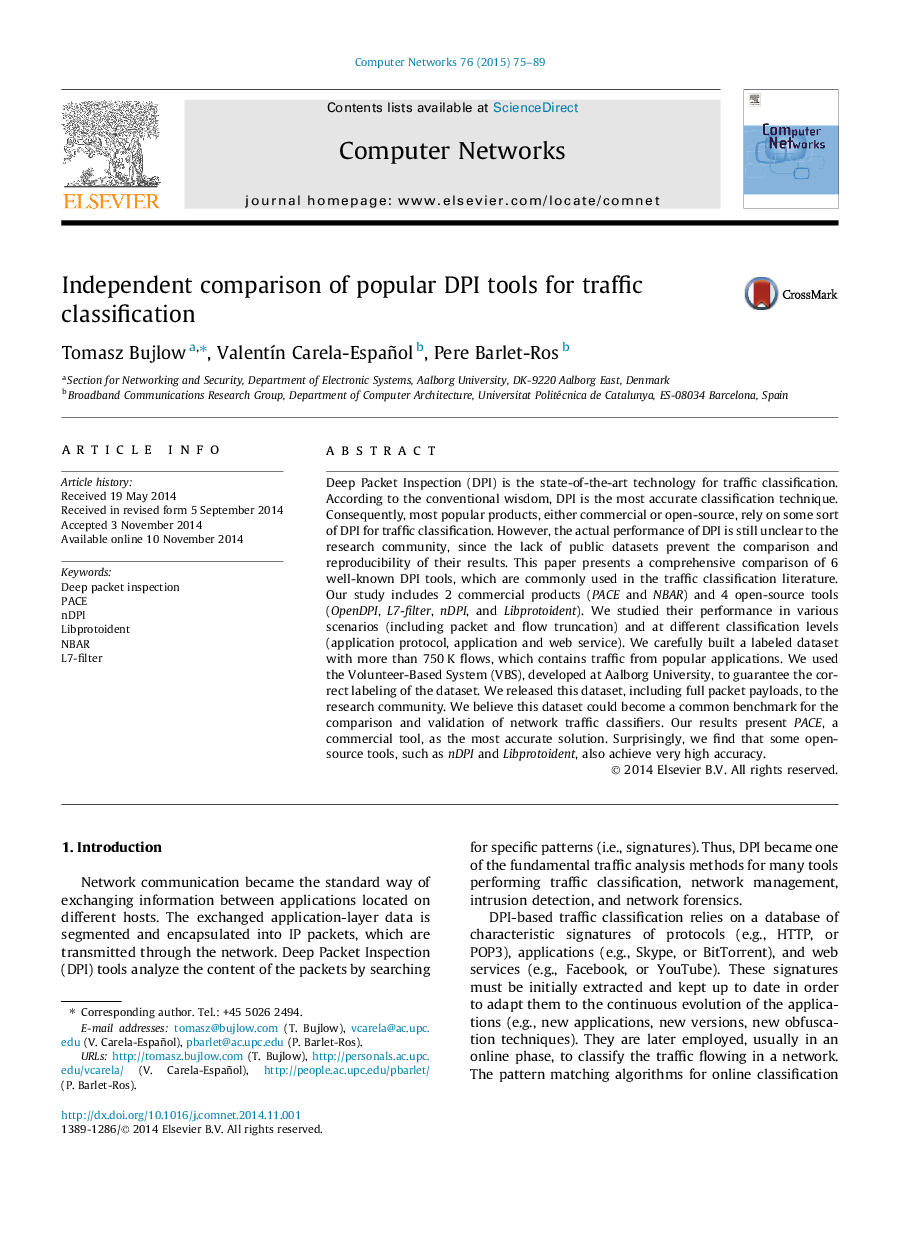| Article ID | Journal | Published Year | Pages | File Type |
|---|---|---|---|---|
| 452858 | Computer Networks | 2015 | 15 Pages |
Deep Packet Inspection (DPI) is the state-of-the-art technology for traffic classification. According to the conventional wisdom, DPI is the most accurate classification technique. Consequently, most popular products, either commercial or open-source, rely on some sort of DPI for traffic classification. However, the actual performance of DPI is still unclear to the research community, since the lack of public datasets prevent the comparison and reproducibility of their results. This paper presents a comprehensive comparison of 6 well-known DPI tools, which are commonly used in the traffic classification literature. Our study includes 2 commercial products (PACE and NBAR) and 4 open-source tools (OpenDPI, L7-filter, nDPI, and Libprotoident). We studied their performance in various scenarios (including packet and flow truncation) and at different classification levels (application protocol, application and web service). We carefully built a labeled dataset with more than 750 K flows, which contains traffic from popular applications. We used the Volunteer-Based System (VBS), developed at Aalborg University, to guarantee the correct labeling of the dataset. We released this dataset, including full packet payloads, to the research community. We believe this dataset could become a common benchmark for the comparison and validation of network traffic classifiers. Our results present PACE, a commercial tool, as the most accurate solution. Surprisingly, we find that some open-source tools, such as nDPI and Libprotoident, also achieve very high accuracy.
